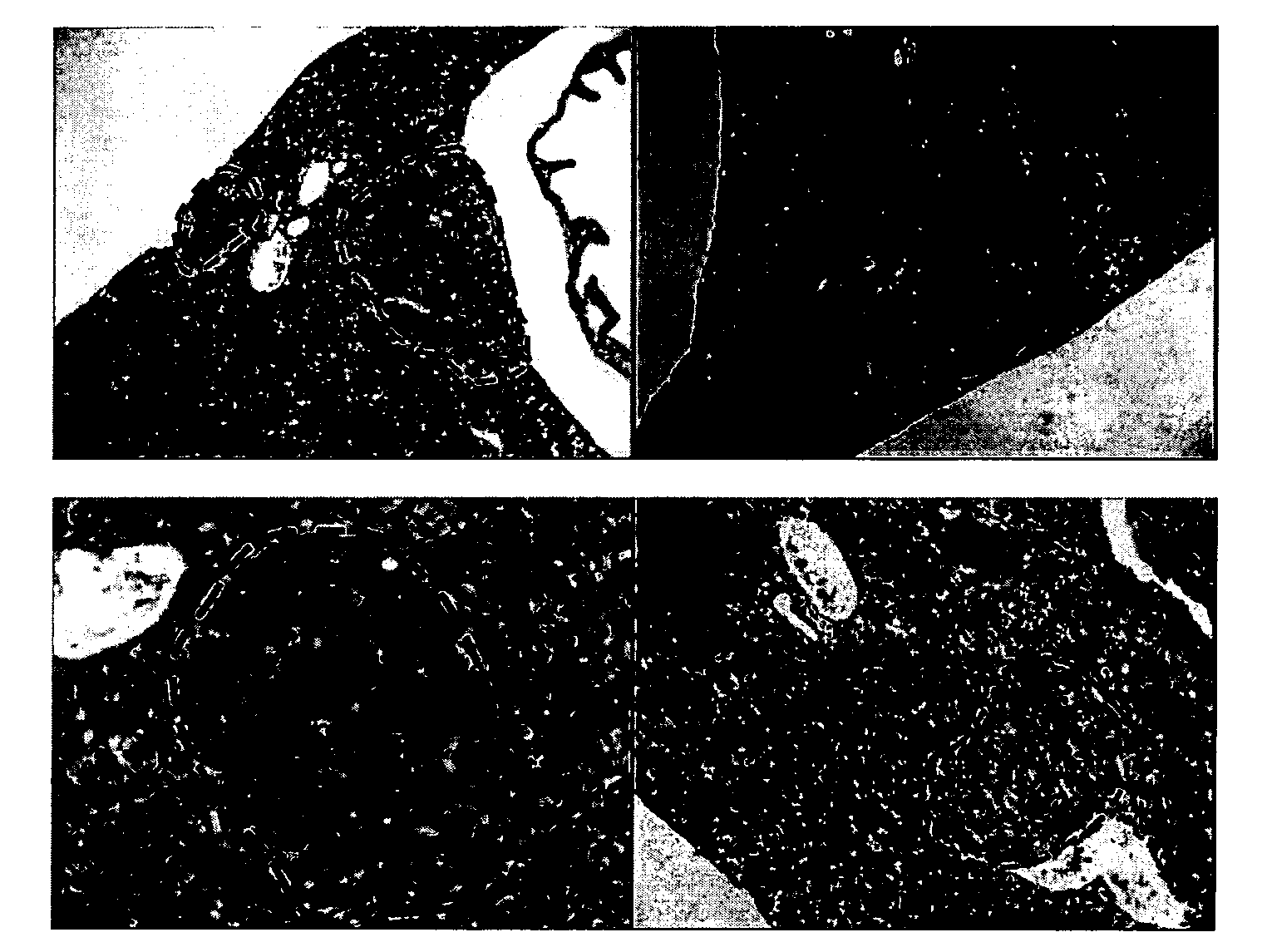Isolated Liver Stem Cells
a technology of stem cells and liver, applied in the field of isolated liver progenitor or stem cells, can solve the problems of high mortality on the waiting list, limited supply of mature human hepatocytes for transplantation, and es cells are prone to generate tumour growth, etc., and achieve the effect of improving properties
- Summary
- Abstract
- Description
- Claims
- Application Information
AI Technical Summary
Benefits of technology
Problems solved by technology
Method used
Image
Examples
example 1
Liver Cell Isolation Procedure
[0281]Human liver cells were obtained from the whole liver or liver segments originating from healthy cadaveric or non heart beating donors. Cells were isolated after the gross clamp time (e.g., between 6 and 12 hours after gross clamp time) while livers were kept on ice in a University of Wisconsin medium until the perfusion. Hepatocytes were isolated using a classic 2-step perfusion technique {Seglen, 1976} {Stephenne, 2005}. Liver tissue was sequentially perfused by the apparent blood vessels with an EGTA solution (Earl's Balanced Salt Solution without Ca++ and Mg++, 0.5 mM EGTA, 5 mM Hepes, 2 mg / l gentamicin, and 100,000 IU / I penicillin G) and a digestion enzyme solution for 9 to 12 minutes each at 37° C. The digestion solution (EBSS with Ca++ and Mg++, 5 mM Hepes, 2 mg / l gentamicin, and 100,000 IU / I penicillin G) included 0.9 mg / ml of collagenase P and 0.03 mg / ml of soybean trypsin inhibitor. The liver capsule was incised and the hepatocytes were r...
example 2
[0325]An exemplary treatment with the liver originated progenitor or stem cells of the invention, cell lines thereof or cell populations comprising such (specifically mentioning, albeit of course not limited to, the LMBP 6452CB line), or progeny thereof, optionally genetically modified, may be as follows.
[0326]Cells are infused in serial injections, preferably not exceeding 25 to 50×106 cell / kg, preferably 4 hours apart, or 8 hrs apart, or more than 8 hrs up to one week, or more than one week. A total cell quantity of 250×106 cell / kg, or 500×106 cell / kg are infused over few days, preferably one or preferably two weeks. Serial infusions can be repeated as required, every month, or every six months, or every year or more.
[0327]Access to the portal vein is by direct puncture under radiological and or ultrasound guidance, via a puncture needle, or via a percutaneous catheter, or via a Port-a-cath R device, or via a Broviac R device inserted surgically in any vessel draining to the porta...
PUM
| Property | Measurement | Unit |
|---|---|---|
| temperature | aaaaa | aaaaa |
| temperature | aaaaa | aaaaa |
| temperature | aaaaa | aaaaa |
Abstract
Description
Claims
Application Information
 Login to View More
Login to View More - R&D
- Intellectual Property
- Life Sciences
- Materials
- Tech Scout
- Unparalleled Data Quality
- Higher Quality Content
- 60% Fewer Hallucinations
Browse by: Latest US Patents, China's latest patents, Technical Efficacy Thesaurus, Application Domain, Technology Topic, Popular Technical Reports.
© 2025 PatSnap. All rights reserved.Legal|Privacy policy|Modern Slavery Act Transparency Statement|Sitemap|About US| Contact US: help@patsnap.com



